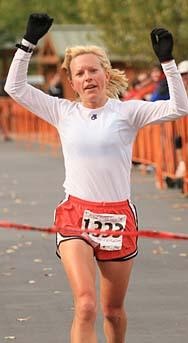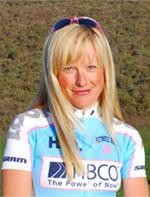Fire and The Other Half
Okay, it's the end of October and the 2007 season is over. It has been over – it's actually been...


November 5, 2007
Okay, it's the end of October and the 2007 season is over. It has been over – it's actually been over for quite some time now, seeing as how my last race was back in August. One of the hard facts of being an athlete is that somewhere, sometime you have to slow down, step away from your sport, and take the dreaded "break." Cycling is no exception.
Living in Durango, Colorado, an absolutely sublime place that marks the border between jagged alpine-like peaks and endless sandstone deserts, October is the perfect month to do other things that don't require two wheels. Run, hike, stretch, breathe, sleep, eat and live. All this seems fine and dandy, more over it actually seems like a small sliver of sanity. That is, until it starts; the restlessness or as I like to call it 'The Fire.' The Fire – It starts slowly to creep into my blood again – Inevitably and undeniably.
So why, you might ask, did I come out of my hibernation to pound my body for 13.1 miles over gruelling pavement on a freezing sub-30°F morning? The answer is simple: The Fire. A quality that most athletes can identify with is our passion (read 'addiction') to take on challenges. Training plans are never far behind. What most see as nothing more than torture I see as enticing, intriguing and yes, pleasurable. So naturally, back in September when surfing the net over a 'cup of joe' and stumbling upon the website of The Other Half half-marathon in Moab, Utah, that little pestering voice in my head asked me "Can you do this, Marisa?" I said "Sure!" without a moment's hesitation. So, that's exactly how a professional cyclist ended up testing the limit with more than 1,300 runners that chilly fall morning. Oh yeah, did I mention that, that cyclist (me) won?
The first thing I have to say is that running is nothing like cycling. Period. Both endurance sports require enormous volumes of oxygen, but really the similarity stops there. Running demands tolerance for discomfort in your knees, hips and back; cycling requires that same mastery over pain but in different places, muscles. Burning quads, glutes and hamstrings. Pick your poison; I choose both. After 10 months of seemingly endless pedal strokes, hundreds of hours of being confined, clipped and connected to machinery, the notion of glissading over pavement and dirt, free of any restraint is absolutely intoxicating. Pure. In the natural world they call this a symbiotic relationship. My inner science nerd came out.
It would be a lie if I said that I didn't "train" for this half-marathon, but since my training plan for October was to not train, what I really did was "prepare" (code for "train"). The most mystifying fact coming off the bike into the realm of pavement-pounders, was "how do their legs do that!?" However, funny, isn't that what runners say about cyclists on the final day of a huge stage race when we're still able to sprint for the line after climbing for a million miles? Perhaps the differences are not so different.
As the days before the race drew nearer, I found myself more and more nervous. Perhaps this is yet another quality that athletes have, no matter what the race it's serious. There is no "just doing it for fun." The fun is the race! So I prepared like I do for bike races, with special consideration for sleep, hydration, nutrition, the full deal. I even made sure to line up at the front. The field was huge at this race; over 1,300 runners and even more interesting: the ratio of women to men was 2:1. My pre-race goal was a top 10. Okay I admit it, really a top five, and a podium finish would make me smile the whole way home. Not knowing really who to watch for, my strategy was simple: follow the fastest woman and try to hang on her wheel (cycling figure of speech).
The gun went off and within the first 200 metres I found myself running with four other women off the front. Wow. Two of the four were "pro" runners. Kind of intimidating, I thought as I realized the irony of that thought. One of the women shot off the front and at our first mile split marked a sub six (running figure of speech). I clocked in at 6:21, a fast pace for the first mile of a 13-mile race. The Fire.
Mile 1: Feeling good, light, honest.
Other competitive runners have shared horrifying stories with me about cracking the last few miles of a long race, so I decided to play it safe and let the one gal go, still having two others to work with. Although the aerodynamic factors do not come into play as much when running, the psychological factors are huge; I sat in, I "sucked wheel" for four miles – something that would get me a verbal lashing in the world of cycling. The women setting the pace said nothing. They ran, I ran, they speed up I speed up, they looked, still there. An endorphin filled form of follow the leader.
Mile 4: Hold on, patience
My intuition and patience served me well, the runner off the front starting coming back between miles six and seven, a conservative move on my part that would prove to be key to my first place finish. I did keep one card up my sleeve, between miles seven and 10 the course kicked up a few notches throwing in some vicious short steep hills. As a good climber on the bike, I knew that hills were often the weakening and breaking point of some.
Mile 7: Pop. Pop. Two out of four are gone.
The race was now a duel. Keeping that card well up my sleeve and knowing that once a runner pops-off, there is very little chance of them regaining their position at the front, it was up to me to once again follow and stick to that wheel. The hills hurt, but really, after racing up five-smile climbs on day six of a stage race, these little kickers seemed like a tease. My card: climb like I'm on my bike, start to turn the screws. If I was hurting, then my opponent was surely hurting. This is an important mantra that all endurance athletes can benefit from. So often while in that moment skating on the razor's edge of complete muscle fatigue and mental breakdown, we think that our suffering is solitary that our competition is sub-human (or super-human?), not capable of feeling. It is that exact thinking that can lead to your demise in any race.
Mile 10: Top of a hill. She's falling behind.
Being opportunistic I knew that this was the moment, this was the race, a small space between runners or riders can grow exponentially if managed correctly – I hit the gas. Whatever that means in running when you're already clocking a blistering 6'20" pace. Again a perfect move on my part, that small seemingly insignificant two-stride gap grew to a wonderful 25 metres in under a minute. Glancing at my watch and seeing that I had only two miles to go, I calculated my time in this NOW red zone.
Mile 11: Less than 13 minutes to the finish. Come on legs, focus.
I visualized myself on my time trial bike, digging, pushing, concentrating, with every pedal stroke (I mean stride) a fraction of acceleration. Coming into the final tenth of a mile the gap had grown to a safe 45 seconds. Reaching for that front zipper to zip up, and realizing that there wasn't one, I raised my hands to victory!
Oh, that sweet smell. Amazing yet all too fleeting. Here I sit over a week later, reminiscing on that day, moment by moment. Is my life different, has anything changed? Am I an Olympic bound runner because I played my cards right in one little race? Will I bail on cycling and go to the other side? What about triathlon? The answer is "no." This surprise, like so many in life, good or bad, begs that pervasive and nagging question "What is the lesson?" The lesson I took away is simple and perhaps commonplace but all the same: embrace The Fire.
So now as the spectacular Colorado autumn begins to fade and give way to long cold nights, I know that it is time to start thinking about the new season and the long steady road of base training ahead. I am excited once again to mount that piece of machinery and start slogging out those miles that will make me invincible in the spring. It's hard to pack those running shoes away but I'll be back. Perhaps to The Other Half, maybe even to the other side.
Get The Leadout Newsletter
The latest race content, interviews, features, reviews and expert buying guides, direct to your inbox!
Follow the program's young female cyclists as they embark on their journey to the top of the pro ranks
The US Women's Cycling Development program was founded by former pro rider, Michael Engleman, as a way to help promising young women cyclists reach their full potential as athletes.
The dedicated and well spoken women of this program provide thoughtful, compelling and sometimes hilarious anecdotes of their experiences in this diary. For further reading about the program, visit the USWCDP website.